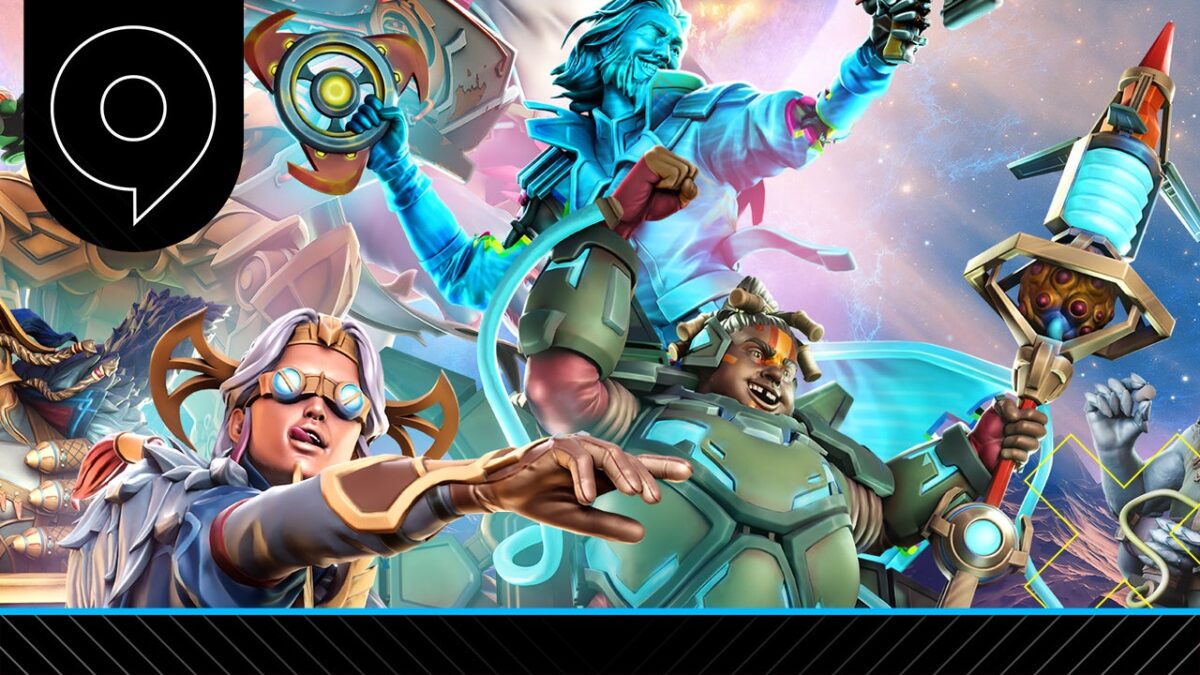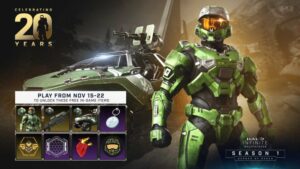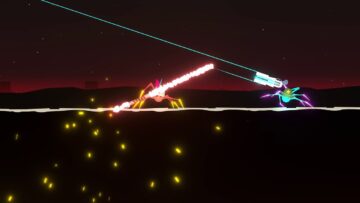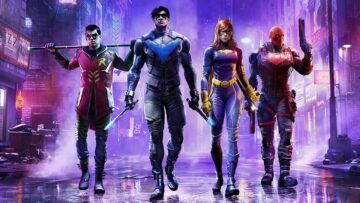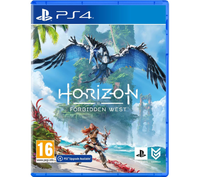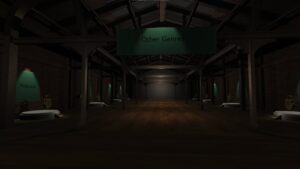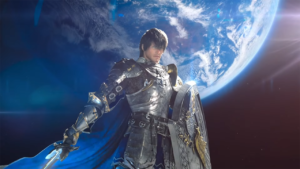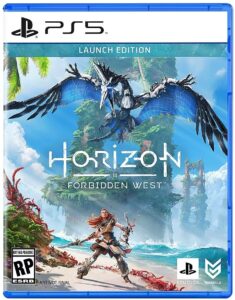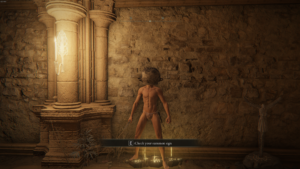The worlds of tabletop games and video games have often overlapped. Here at Gamescom 2022 there are three different Warhammer games, and over the years we’ve seen the likes of D&D, Pathfinder and more adapted into a variety of video game forms. But Moonbreaker, from Subnautica developer Unknown Worlds Entertainment, is unlike any tabletop-inspired video game I’ve ever seen. Rather than making the lore a reality, Moonbreaker quite literally is a competitive tabletop miniatures game played with figures you paint yourself. It’s a celebration of the paint-and-play hobby, and I think it has the potential to be brilliant.
Unlike the games I’ve already mentioned, Moonbreaker is not based on an existing tabletop game. Everything has been created from scratch by Unknown Worlds – but it does have everything you’d expect of a miniatures game; a robust rule set for turn-based combat, simple tactical choices that build into deep strategies, and a collection of very cool miniatures split into colourful different factions. Its sci-fi universe even has lore created by beloved author Brandon Sanderson, which is delivered via audiobooks. Effectively, it’s the entire Games Workshop hobby on your PC, just without the Space Marines.
At Gamescom 2022 I was able to play Moonbreaker for an hour, which was enough to get through its quick tutorial and one match of its fast-paced versus mode. I love what I saw, but I’m also surprised by the fact that, rather than playing akin to real-life miniatures games such as Warhammer or Infinity, Moonbreaker is actually closer in design to card games like Hearthstone.
It begins with your captain. For me, that was Astra, a child genius mounted atop a huge frog. She’s the most important mini on the board, because if she dies it’s game over. My opponent (in this instance an AI) also has a captain, Zax Jak’ar, who is essentially a recently-deceased Han Solo living a second life via a hologram. To win I must kill him, whatever the cost.
Backing up my captain are nine crew mates. They are, in CCG terms, your deck. Much like a Hearthstone card they each have an attack and HP value, plus one or two unique skills. They’re deployed like cards, too; you have a hand (here known as the Bridge) and you can place a character on the board when you have enough ‘Cinder’ (which, like Hearthstone’s mana pool, builds each turn). More powerful allies cost more Cinder, and so you’ll need to judge when it’s best to spend or save your resources.
It’s on the board that Moonbreaker begins to break away from card games, even if the fundamentals of CCG design still fuel its intentions. Movement and location is initially the most obvious factor. As the turns go by, I begin to put more and more thought into where Astra should be positioned. Placing her on the sidelines keeps her safe from the range of Zax’s minions and his own dual handguns, but it also means she’s too far away to use her powerful buffs on my other crew members. I settle for tactical use of the board’s terrain; by placing her within the billowing clouds of a steam vent, any attack made against Astra suffers an accuracy penalty.
“
With Astra safe, I need to consider the composition of my ground troops. Zax has deployed his Toxoid, a wasp-like fighter who has inflicted one of my crew with a poison that will kill them on the next turn unless healed. To counter this I deploy my medic, Stitchy McPatchy, who will keep my poisoned ally in the fight. But there’s a complication; newly deployed minis can’t do anything until the next turn, but the moment I click ‘end turn’ my sick crew member is going to croak. But that’s where Astra comes in; from her new position close to her allies, she can use an ability to activate Stitchy right now. Special abilities like these cost Cinder to activate, which means I’ll be too poor to deploy another miniature this turn, but right now I’m in desperate need of medical services. I wake Stitchy up and immediately use the last of my Cinder to heal the sick crew member.
It’s a simple synergy, but it’s indicative of how Moonbreaker’s abilities and terrain can influence tactics and, ultimately, strategy. There appears to be genuine depth and richness here. Later, Zax summons in a crew member who can grow in power with each turn that goes by. The developer guiding me through the demo warns that, if not dealt with, this character will theoretically be able to one-shot my captain, and thus win Zax the game. This sort of character forces interesting strategies from both sides; for Zax it’s all about preserving his new nuclear bomb at all costs. For me, do I build a strategy around removing her from the board, or double down on ending the game by defeating Zax?
I opt for the latter. To inflict a quick chunk of damage, I call in an Orbital Strike. This is a Ship Assist, one of several abilities that are free to use but need to be charged up over several turns. This bombardment takes four turns to warm up, but it’s ready and so I rain heavy munitions across the battlefield. But Zax still has plenty of health left, so I have to make a decision on what to do with my Cinder. Do I spend it deploying a few new crew members who can mob him next turn, or do I spend it on an ability-fuelled tactic that could end the game here and now? I risk the latter, and replicate my deploy/activate plan from earlier, this time with a huge turret. The laser barrage cuts through Zax’s remaining health, sending him to the grave for a second time.
It’s a deeply satisfying victory, and it’s only my first ever match. I’m already excited about the possibilities different crew set-ups can provide, and how various abilities, Ship Assists, and passive skills can be combined.
But, despite this enthusiasm, I’m also a little concerned about how I’ll build that crew. When Moonbreaker launches in early access on September 29, it will come with a respectably large collection of miniatures, but that’s just the start. That range will grow, and new miniatures will come via booster pack-style loot boxes. That means both microtransactions in a premium game and the risk of paid-for duplicates. While I’m a bit grumpy about the added costs, I’m not necessarily completely opposed to buying new minis in theory. But in my real-life hobby, I go into Games Workshop and buy the models I want. I’d much rather Moonbreaker followed that model (or even sold pre-assembled crews) rather than the random potluck that has plagued card games since the hobby began. Thankfully there’s an in-game currency earned through play which takes a little of the sting out of that blemish on Moonbreaker’s tremendous promise – although the rate at which you earn it will be key.
I may never own a massive collection of Moonbreaker minis, then, but I’m still really looking forward to exploring the depths of these tactical battles and devising devilish, multi-turn plans. I’ve already got several theoretical strategies formulated in my mind, waiting impatiently to be deployed when early access begins next month.
Matt Purslow is IGN’s UK News and Features Editor.
